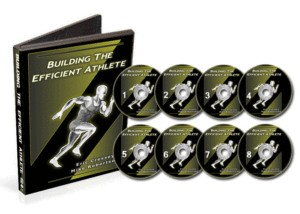Getting Geeky with AC Joints: Part 2
Getting Geeky with AC Joints: Part 2
In my last newsletter, I went into great detail on the types of acromioclavicular (AC) joint injuries we see, and some of the common inefficiencies that cause some folks to become symptomatic. I also outlined some corrective exercise strategies to expedite recovery time. This week, though, I discuss a very important – yet often-overlooked – piece of the puzzle: how to maintain a training effect in spite of these injuries.
Ask anyone who has ever had an AC joint injury, and they’ll tell you three things to avoid if you don’t want to irritate it:
1. Avoid direct pressure to the area (particularly because it has very little muscle mass to cushion it)
2. Avoid reaching across the body (horizontal adduction)
3. Avoid reaching behind the body (full extension)
We can use these three guidelines to get moving in the right direction with respect to maintaining a training effect in spite of the AC joint injury.
With respect to #1 from above, front squats are an absolute no-no. The pressure on the bar across the shoulder girdle can really take an upset AC joint and make it markedly worse. And, since this is in many cases an injury that we’re just “waiting out,” simply training through it will only makes things worse long-term. So, deadlift variations, single-leg variations, and back squats (assuming no other related problems) are likely better bets. That said, we generally use the safety squat bar and giant cambered bar exclusively with those who present with AC joint problems.
Another important consideration in this regard is overhead pressing. Believe it or not, many individuals with AC joint problems will actually tolerate overhead pressing quite well, as direct trauma to the AC joint won’t really compromise scapulohumeral rhythm very much. However, you have to consider two things.
First, as I mentioned in my previous newsletter, some folks might have developed the AC joint issue over time due to a scapular anterior tilt causing the acromion and clavicle to sit differently. This dyskinesis would also make overhead work less safe – so the individual would actually be training through a faulty movement pattern, and potentially injuring the rotator cuff, biceps tendon, bursa, and labrum.
Second, if the individual is okay to overhead press from a movement standpoint, one needs to make sure that the bar, dumbbell, or kettlebell does not come down directly on the AC joint in the bottom position.
With respect to #2 from above, obviously, dumbbell flyes and cable crossovers are out (not sure why they’d be “in” in the first place, but that’s a whole different newsletter). However, close-grip bench pressing variations will generally cause pain as well. You also have to be careful with cable and medicine ball variations that may position the arm across the body.
Moving on to #3, full extension of the humerus will light up an AC joint pretty quickly. So, dips are out – and, honestly, I generally tell folks they’re out for good after one has experienced any kind of AC joint issue. Full range-of-motion (ROM) bench pressing and push-ups are generally issues as well, so I tend to start folks with more partial ROM work. Examples would include dumbbell and barbell floor presses and board presses. Here’s a 3-board press:
As the shoulder starts to feel better, one can move down to 2-board, 1-board, and eventually full ROM bench press. Remember, a medium or wide grip will generally be tolerated better than a close grip.
I also really like push-up iso holds at a pain-free ROM for these individuals because closed-chain exercises are always going to be a bit more shoulder friendly than open-chain variations. This is really quite simple: set up as if you are going to do a push-up, and go down as far as you can with no pain. When you reach your pain-free end-range, hold there while bracing the core, locking the shoulder blades down and back, and tightening the glutes; do not let the elbows flare out or hips sag! We’ll hold for anywhere from 10-60s, depending on fitness levels. Over the course of time, increase the ROM as your symptoms reduce.
There you have it: acromioclavicular joints – from onset to corrective exercise – in a nutshell. Obviously, make sure you seek out a qualified professional if you think you may have these issues, but keep this progression in mind as you return to (or just try to stay in) the iron game.
Feedback on Building the Efficient Athlete
“In my ten years in the fitness industry, I have been to many seminars and conferences – but the Building the Efficient Athlete Seminar was by far the most informative and comprehensive event I have attended in as long as I can remember. The amount of knowledge you get when you combine Eric Cressey and Mike Robertson is unparalleled. The seminar was filled with great classroom information, hands-on assessments, and on-site training tips. I highly recommend this DVD set to any coach, trainer, or athlete who is looking to get a leg up on the competition.”
Mike Hanley, USAW, RKC
Morganville, NJ
www.HanleyStrength.com
Pick up your copy of Building the Efficient Athlete today!
New Blog Content
Exercise of the Week
Stuff You Should Read
Jays Prospect Collins a Surprising Strikeout Machine
Random Friday Thoughts
How to Progress Back to Deadlifting After a Back Injury
Have a great week!
EC
Click here to purchase the most comprehensive shoulder resource available today: Optimal Shoulder Performance – From Rehabilitation to High Performance.
Sign-up Today for our FREE Baseball Newsletter and Receive a Copy of the Exact Stretches
used by Cressey Performance Pitchers after they Throw!




